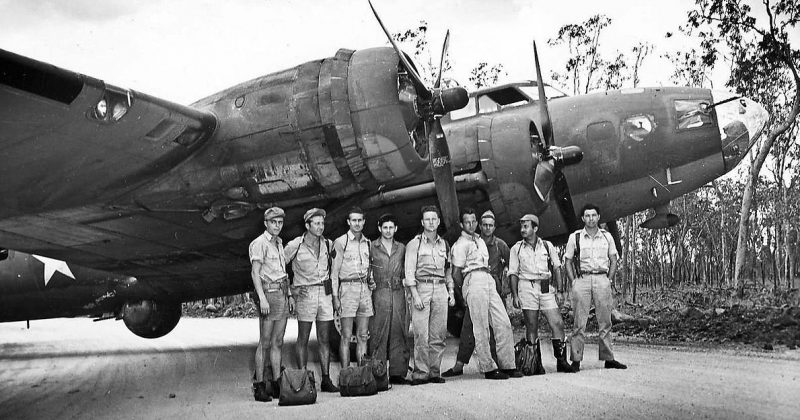Before his father’s funeral in 1973, Ken Elder Bledsoe knew little about his father, Vernon Elder, or his Second World War experiences as a tail gunner in a B-17 bomber. All he knew was what he had heard from his aunts during the burial service.
Perhaps that is what prompted him to learn more about his father’s military contributions during 1942 in Australia. A bundle of material — letters, photographs, a scrapbook and faded newspaper clippings — was found after the funeral in the bottom most drawer of his father’s desk in southern Colorado. Aided by this valuable resource, he learned more.
Because his parents had divorced when he was young, Bledsoe said, he knew very little about his father. Now he knows that his father dragged his best friend’s body from the B-17 after a fatal crash off Australia’s coast.
Found among the material in the bottom drawer was a tatty, water-damaged watch his father had worn in the early hours of July 14, 1942, when the bomber crashed. The watch is frozen at 3:34 a.m., four minutes after the plane took off and crashed one mile off shore.
After retiring in 2002, the former history teacher who had taught for 24 years in Fort Collins began putting together the story of his father.
He learned the identities of his crewmates aboard B-17 No. 655, part of the Army Air Forces’ 19th Bomb Group, 30th Squadron, and he set about tracking down their families.
His researches took him 10,000 miles from America, flying into a small island airport on a runway his father departed from 60 years ago.
The story started to gel when Bledsoe and his wife organized the correspondence Elder had penned to his mother in 1942. A dramatic story started to emerge, he said.
An old newspaper clipping from the La Junta Daily Tribune caught Bledsoe’s attention.
The newspaper article described the crash close to Australia’s Horn Island in the Pacific that killed three crewmen. Elder was one of five men who escaped the wreckage.
Locating more letters and talking to the last surviving crewman of the crash helped Bledsoe determine the possible crash site. In 2010, Bledsoe and his wife, also a retired teacher, ventured to Horn Island.
Taken to the possible crash site by fishermen they hired, Bledsoe, using a snorkeling mask, dove down during low tide and located the wreckage; photos taken that day show underwater pictures of the part of one wing and a wrecked engine, the remains of B-17 No. 665.
Elder and the two other crew members aboard the bomber were both from Colorado. Paul Lindsey, a pilot, hailed from Canon City. Sgt. Houston Rice, Elder’s best friend, called Ordway home. Rice died in the crash, but Elder and Lindsey survived. Working in tandem, they kept Rice’s body afloat until rescued by an Australian boat. Lindsey was killed one month later on a separate assignment.
“For no obvious reason, we started to descend; the old plane would just not ascend,” Elder said of the crash in one letter. They hit the water. He was in the radio room and went through the right side of the fuselage, getting bruised and cut. Rice was next to the ball turret and probably died instantly.
Elder departed from Australia in December 1942, and after settling back home, he married and had one child, Bledsoe. At the time of his demise, he had been a grocery store produce manager. He never got into another plane or told the tale of survival to his son.
He was not the same man following the war, Bledsoe said.
After his return from Australia, Bledsoe put together his book, ‘Echoes from an Eagle,’ which was published in 2016, KHOU.com reported.
It was a mixture of investigation and dedication to his father and all those Second World War fliers, he said.
